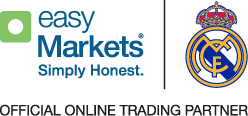Ozempic cuts prices under media pressure: What will happen in the pharmaceutical sector?

Published on 29.09.2025
On 18 August 2025, Novo Nordisk announced a major price reduction for its blockbuster weight-loss and diabetes drug, Ozempic, in the United States. The cash price dropped from nearly USD 1,000 per month to USD 499, available through partners like GoodRx and Novo Nordisk’s NovoCare platform.
This move came after months of intense media scrutiny and political commentary over the high cost of GLP-1 drugs in the US. President Donald Trump publicly highlighted dramatic price discrepancies between the US and the UK, where a friend reportedly paid just £88 for the same medication. His comments at a White House ceremony in May were picked up by major news outlets like Reuters, The Guardian, AP News, and Politico, triggering renewed pressure on pharmaceutical giants to align US drug prices with global markets.
Novo Nordisk’s decision is more than a pricing adjustment: it is a strategic shift with major market implications.
Let’s break down why this matters to traders, investors, and the future of the pharmaceutical sector.
What is Ozempic?
Ozempic, developed by Danish pharmaceutical company Novo Nordisk, contains the active ingredient semaglutide. Originally designed to treat type 2 diabetes by boosting insulin production and suppressing appetite, it quickly gained global fame for its weight-loss benefits.
Celebrity mentions by Elon Musk, Serena Williams, and Oprah Winfrey further fuelled demand, helping Novo Nordisk become one of Europe’s most valuable companies. Demand has been so high that it triggered global shortages of GLP-1 drugs in recent years.
Why Novo Nordisk cut prices
While marketed as a goodwill gesture toward patients, this price cut is also a tactical response to mounting criticism and competition.
The reduction primarily targets:
- Uninsured US patients or those with high-deductible health plans.
- US individuals paying cash rather than relying on insurance or Medicare.
By slashing the monthly cost by nearly 50%, Novo Nordisk is:
- Defending market share against competitor Eli Lilly’s rising dominance with Mounjaro and Zepbound.
- Countering political and media pressure, especially in the US where drug pricing has become a campaign issue.
- Shaping public sentiment, positioning Novo as a company addressing affordability concerns head-on.
Impact on traders and investors
The pharmaceutical sector is in a transitional phase, and this move from Novo Nordisk highlights both risks and opportunities:
- Novo Nordisk (NVO): Shares have dropped over 60% since June highs of USD 147, now trading around USD 56.46. Investors are assessing whether lower pricing will drive higher volume or compress margins.
- Eli Lilly (LLY): Trading above USD 600, Lilly has captured market enthusiasm for its GLP-1 portfolio and continues to be viewed as a sector leader. Its stock surged 55% between 2022 and 2023, reflecting investor confidence in the GLP-1 market.
- Pfizer (PFE): Despite attempts to re-enter the weight-loss drug market, Pfizer’s failed Danuglipron trial has left its stock at USD 24.76, consolidating within a bearish channel.
The GLP-1 drug market is projected to reach hundreds of billions of dollars by 2023, making competition between Novo Nordisk and Elli Lilly is central to investor sentiment.
Pharmaceutical sector implications
Trump’s comments comparing Ozempic prices between London and New York sparked a media firestorm. Major outlets questioned why Americans were paying significantly more for life-saving drugs.
This has introduced regulatory uncertainty, as US policymakers float the idea of linking domestic drug pricing to international benchmarks.
The pharmaceutical sector is now navigating:
- Potential pricing reforms
- Political scrutiny on global supply chains (e.g. Trump’s criticism of NVIDIA for Taiwan-based chip production)
- Heightened public attention to drug pricing transparency
Market outlook: risks and opportunities
For traders, this situation represents a unique convergence of factors:
- Healthcare volatility driven by pricing changes, competition, and regulatory risk.
- CFD and short-term trading opportunities as sentiment shifts rapidly.
- Long-term potential in GLP-1 drugs as they move from luxury treatments to a public-health necessity.
Analysts see GLP-1 as a structural shift in healthcare spending, meaning pricing strategies like Novo’s may influence the entire sector. Ozempic is no longer just a blockbuster drug: it’s a market-mover shaping global healthcare investment trends.


































